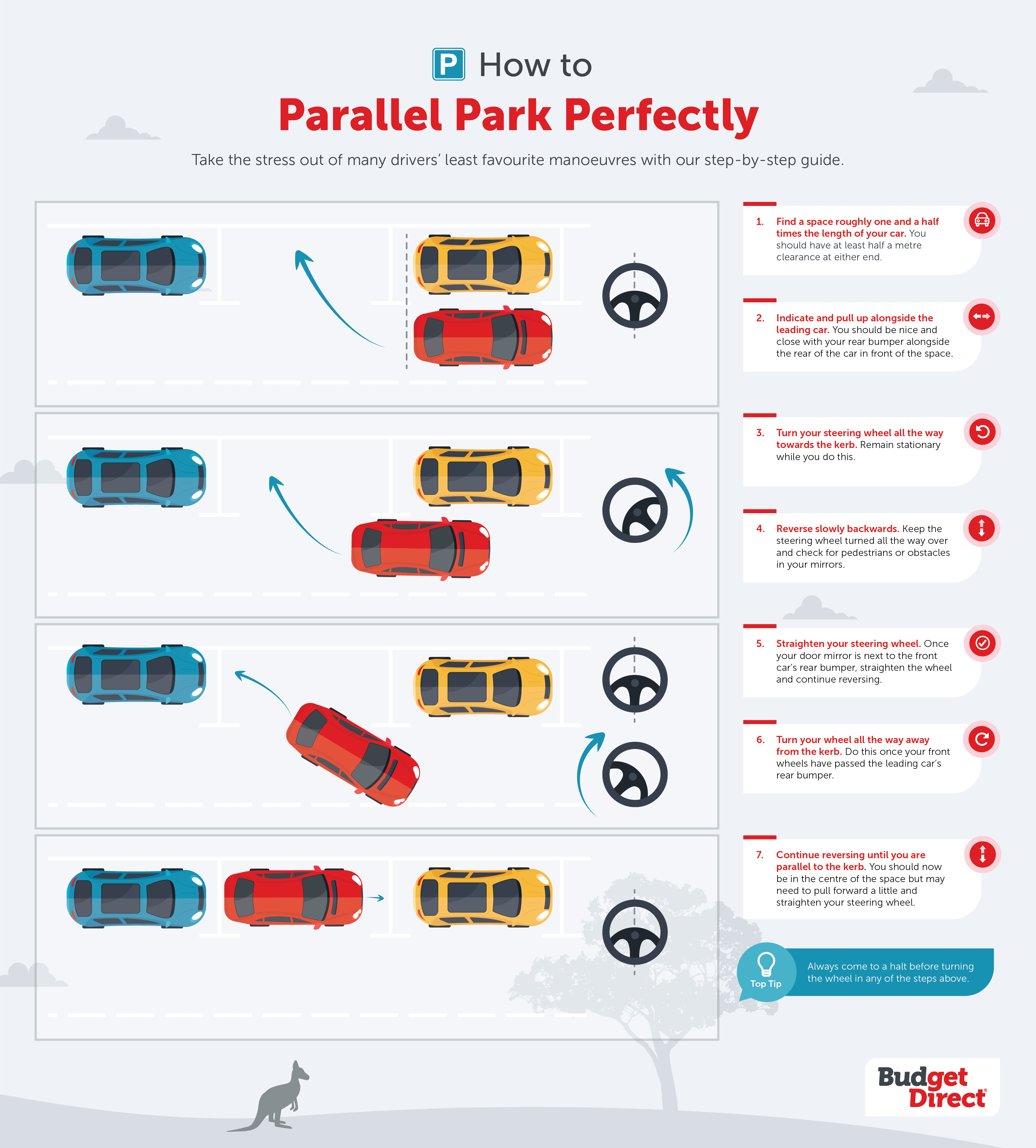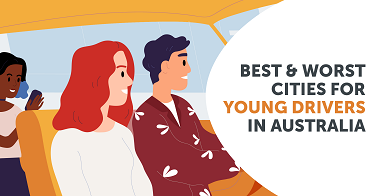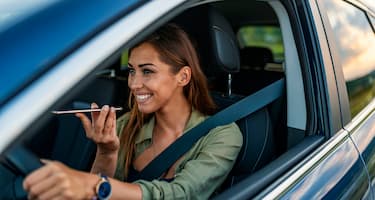Parking seems to be one of those love to hate topics among car owners. From the cost of it, how easy (or usually not) it is to find a spot, to worrying about the wardens, parking is a frequent pain. But what about the act of parking itself? Some people find it so stressful that their anxiety has even been given a name, ‘Parallelophobia’. [1]
How many of us would confess to less than perfect parking? Or do most people rate their reversing skills rather highly? We decided to find out with a survey of more than 1,000 Australian car owners across all states and territories, including metro and regional areas.
Quick Stats
About 60% of respondents have to parallel park on a weekly basis. Women and residents of outer suburban areas are more likely to report that they rarely or never parallel park.
Nearly half (49%) of respondents claimed to be either very or extremely confident in their parallel parking skills.
Over half (57%) of car owners surveyed report feeling stressed or anxious about parallel parking, with women and younger drivers reporting higher levels of anxiety.
Many respondents (52%) have considered or have purchased smaller cars to make parking easier, and more than a fifth (22%) would pay extra for a car with an automated parking system.
It turns out that, even in our land of endless highways, that reversing into a parking space behind another parked car is a skill many of us have to call on frequently. In fact, 60% of respondents said they parallel park at least once a week and nearly one in 10 (9%) are doing it daily.
As you might expect, people living in the outer suburbs manage to avoid this chore more often, with nearly half of respondents (47%) telling us they rarely or never do versus 31% of car owners surveyed living closer to the CBD.
Nearly half (48%) of women drivers surveyed also told us they rarely or never parallel parked although only 31% of men said the same.
Perhaps not surprisingly, our most populous state, New South Wales, is also the one that demands the most of its parkers, with only 30% saying they manage to get away without performing a reverse park into a space [2]. This made them the most confident parkers of all the states and territories with nearly three in five (57%) telling us they are very or extremely confident in their abilities.
Find out about the best and worst cities for young drivers.
Confidently in Control
So, if many of us are busy backing up our beloved vehicles to the kerb, which of us are the most confident in their skills and who would rather use a parking lot and walk the rest of the way?
From our survey results men certainly seem to be the surest, about their parking skills with 65% claiming to be very or extremely confident, nearly double the proportion of women (34%) believing the same.
One interesting finding of our survey that suggests practice makes perfect when it comes to parking, is how attitudes towards it changed with age.
Gen Z (25%) and Gen Y (26%) car owners surveyed are most likely to have minimal or no confidence when it comes to parking whereas only 7% of the Silent Generation said the same. We saw the reverse when it comes to car owners who are happy to, well, reverse – 64% of the Silent Generation and just over half of Baby Boomers (52%) told us they are very or extremely confident.
When we asked car owners how often they were stressed or anxious about parallel parking the same pattern emerged. Less than one in 10 (8%) of the Silent Generation found it anxiety-inducing and only 17% of Baby Boomers but a significant third (33%) of Gen Y and nearly two in five (37%) of Gen Z drivers always or usually did so. We also found another split between the sexes where twice as many women (35%) confessed to usually or always feeling stressed or anxious while parking as men (16%). *

Parallel Parking Problems
Perhaps not surprisingly, it is having to park on a busy road while holding up traffic that may be the cause of shaking hands on the wheel and clumsy first attempts. Just 8% of people claimed they feel extremely comfortable in this situation and three times as many would avoid it if at all possible.
We asked our respondents to tell us what it was about parking they found trickiest and dealing with traffic topped the list with 61% naming it as the biggest challenge. This was followed by:
Judging space/estimating distance - 50%
Aligning the vehicle and timing of turns - 49%
Exiting the space from a tight park or being parked in - 34%
Maintaining visibility (particularly in larger vehicles) - 24%
Avoiding the Area
Perhaps the most extreme behaviour we learned about from our respondents was the lengths they would go to in order to avoid having to parallel park at all. A full quarter of car owners surveyed confessed to having parked elsewhere and then walked or taken public transport to their destination while a further 14% told us they had simply avoided a particular place altogether as they couldn’t face the parking stress.
Parallel Parking Mishaps
There are probably few things more infuriating as a car owner than coming back to a car that has been dinged or scraped while you were in the shops or enjoying a coffee. The only thing that could make it worse is if the other driver hasn’t left a note, which is all too often the case. Our respondents backed that up, with 15% stating that their car had been damaged while parked but only 6% admitted to being the cause of a parking scrape.
Find out more about car accidents and attitudes to them in our survey.
Technology to the Rescue
Somewhat surprisingly, given the generally negative perception people had of their own parking skills and their reluctance to do it, a large majority (71%) say that it is an essential skill that drivers need to know. However, nearly half (48%) of car owners surveyed are still happy to have some help from technology in the form of reversing cameras or parking sensors and nearly a quarter (23%) wish they had the tech fitted to their own cars.
Current technology actually goes beyond cameras and ultrasonic sensors with some cars now able to automatically identify a suitable space and reverse into it at the press of a button. This can sometimes be an entirely hands (and feet) free experience but often the driver has to maintain control of the accelerator and brake while the car steers itself into a space. Only a third of people surveyed claimed not to need such a system while the rest would either pay extra for a self-parking car (63%) or had already done so (3%).
However, less than a quarter of respondents (24%) said they would have considerable or complete trust in an automated parking system compared to 36% who had minimal or no trust in it. Perhaps the easier route would be that favoured by more than half of car drivers surveyed (52%) who told us that they had either already bought or would consider buying a smaller car simply to make parking easier.
Find out more about Aussie car owners’ attitudes to technology in our 2023 survey.
Key Takeaways
Parallel parking isn’t going away anytime soon and it seems we are fairly reasonably split between whether we see that as a chance to show off our skills or stay at home under the doona rather than risk it.
Thankfully technology is already coming to the rescue of ragged nerves and the spread of automated systems should make tense manoeuvres a thing of the past for more and more of us. Until then, there’s always the option of downsizing.
But the main thing to remember, if you’re looking nervously over your shoulder at the approaching kerb is that you are in good company so just take it slow and give the car waiting behind you a polite wave.
Methodology
This survey was conducted by Pure Profile on behalf of Budget Direct in July 2023. The survey was conducted online with a total sample size of 1013, weighted and representative of all Australian car owners (aged 18+).
The data collected was quality checked and cleaned prior to analysis to exclude any incomplete or poor-quality responses. All comparisons between respondent subgroups were subject to statistical testing and only statistically significant differences with a 95% level of confidence are reported unless otherwise stated.
*The Silent Generation covers those born from 1928 to 1945, growing up during significant global upheavals such as the Great Depression and World War II. The Baby Boomers follow, born between 1946 and 1964, experiencing post-war prosperity. Generation X (Gen X) includes those born from 1965 to 1980, often considered the bridge between analog and digital ages. Generation Y (Gen Y or Millennials) covers individuals born between 1981 and 1996, growing up during the rise of the Internet. Lastly, Generation Z (Gen Z) refers to those born from 1997 to 2012, known for being tech-savvy and socially aware.






